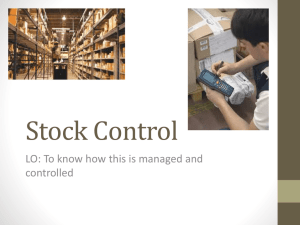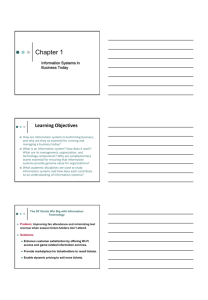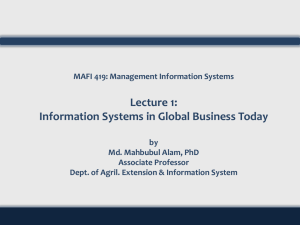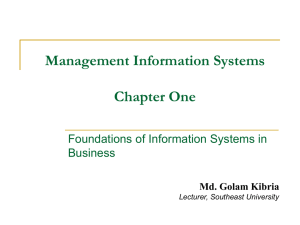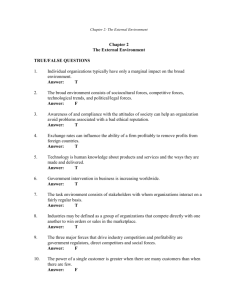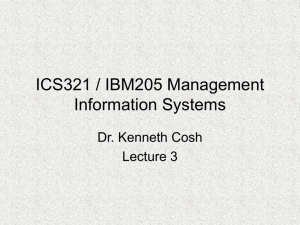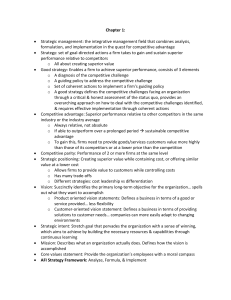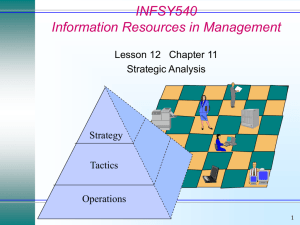Strategic Business Objectives of Information Systems
advertisement
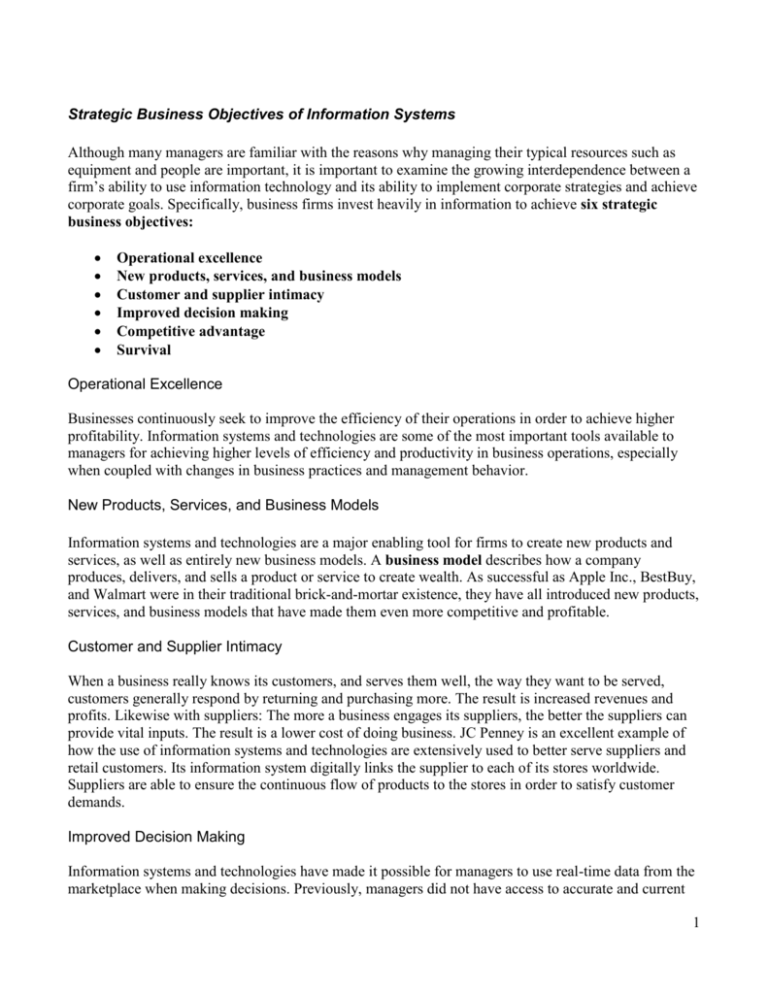
Strategic Business Objectives of Information Systems Although many managers are familiar with the reasons why managing their typical resources such as equipment and people are important, it is important to examine the growing interdependence between a firm’s ability to use information technology and its ability to implement corporate strategies and achieve corporate goals. Specifically, business firms invest heavily in information to achieve six strategic business objectives: Operational excellence New products, services, and business models Customer and supplier intimacy Improved decision making Competitive advantage Survival Operational Excellence Businesses continuously seek to improve the efficiency of their operations in order to achieve higher profitability. Information systems and technologies are some of the most important tools available to managers for achieving higher levels of efficiency and productivity in business operations, especially when coupled with changes in business practices and management behavior. New Products, Services, and Business Models Information systems and technologies are a major enabling tool for firms to create new products and services, as well as entirely new business models. A business model describes how a company produces, delivers, and sells a product or service to create wealth. As successful as Apple Inc., BestBuy, and Walmart were in their traditional brick-and-mortar existence, they have all introduced new products, services, and business models that have made them even more competitive and profitable. Customer and Supplier Intimacy When a business really knows its customers, and serves them well, the way they want to be served, customers generally respond by returning and purchasing more. The result is increased revenues and profits. Likewise with suppliers: The more a business engages its suppliers, the better the suppliers can provide vital inputs. The result is a lower cost of doing business. JC Penney is an excellent example of how the use of information systems and technologies are extensively used to better serve suppliers and retail customers. Its information system digitally links the supplier to each of its stores worldwide. Suppliers are able to ensure the continuous flow of products to the stores in order to satisfy customer demands. Improved Decision Making Information systems and technologies have made it possible for managers to use real-time data from the marketplace when making decisions. Previously, managers did not have access to accurate and current 1 data and as such relied on forecasts, best guesses, and luck. The inability to make informed decisions resulted in increased costs and lost customers. Competitive Advantage Doing things better than your competitors, charging less for superior products, and responding to customers and suppliers in real time all add up to higher sales and higher profits that your competitors cannot match. Toyota and Walmart are prime examples of how companies use information systems and technologies to separate themselves from their competition. Toyota worked its way to top of its industry with the help of its legendary information system. Walmart is the most efficient retail store in the industry based in large part on how well it uses its information resources. Survival Firms also invest in information systems and technologies because they are necessities for doing business. Information systems are not a luxury. In most businesses, information systems and technology are the core to survival. Citibank was the first banking firm to introduce ATMs. In doing so, they had a major competitive advantage over their competitors. In order to remain and survive in the retail banking industry, other banks had no choice but to provide ATM services to banking customers. New federal and state statutes and regulations have resulted in giving firms no choice but to turn to information systems and technologies in order to comply with the new requirements and regulations. Components of an IS The components of an information system are input, processing, output, and feedback processes. Most important is the feedback process; unfortunately, it’s the one most often overlooked. The hardware (input and output) and the software (processing) receive the most attention. Fig 1.4 Functions of an Information System 2 Figure 1-4 shows how using feedback completes the information processing loop. To be a good information systems manager, however, you must bring into that loop far more than just computer data. For instance, your information system reports that you produced 100,000 widgets last week with a “throwback” rate of 10 percent. The feedback loop tells you that the throwback rate has fallen 2 percent in the last month. Wow, you say, that’s a pretty good improvement. So far, so good! But if you put that information into the broader context of the organization, you’re still costing the organization a huge sum of money because each percentage point on the throwback rate averages $100,000. And when you bring in available external environmental information, your company is 5 percent above the industry norm. Now that’s information you can use—to your advantage or disadvantage! It Isn’t Just Technology: A Business Perspective on Information Systems An information system provides a solution to a problem or challenge facing a firm and provides real economic value to the business. The decision to build or maintain an information system assumes that the returns on this investment will be superior to other investments in buildings, machines, or other assets. These superior returns will be expressed as: Increased productivity Increased revenues Superior long-term strategic positioning There are three ways an information system can add value to a business: Help managers make better decisions Help make business processes more efficient Increase profitability The technical approach to information systems emphasizes the “hard” side of technology. The behavioral approach to information systems emphasizes the “soft” side of technology. As technology plays an increasing role in a business’s success or failure, it’s important to mesh both sides. Adopting a sociotechnical systems perspective helps avoid a purely technological approach to information systems. Organizations can achieve more efficient and effective organizational performance by jointly optimizing both the social and technical systems. 3


